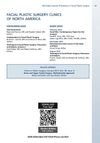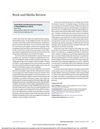
Search
for
Sort by
Research
270-300 / 1000+ results

research Mesenchymal Stem Cells and Stromal Vascular Fraction for Hair Loss
Adipose tissue shows promise for hair regrowth, but more research is needed to confirm best practices and effectiveness.
research Noninvasive Hair Rejuvenation
Noninvasive treatments like minoxidil, finasteride, and low-light laser therapy can help with hair loss.

research Complications in Hair Restoration
Hair transplant complications can be avoided with proper training and understanding.

research Hair Biology
The document explains hair biology, the causes of hair loss, and reviews various hair loss treatments.

research Anesthesia Techniques For Harvesting Via Follicular Unit Excision
Local anesthesia, often with sedation, effectively reduces pain in hair transplant harvesting.

research Hair Restoration Techniques
Current hair restoration methods are improving and include medications, injections, light therapy, and advanced extraction techniques.

research Modified Temporal Incision for Facial Rhytidectomy: An 18-Year Experience
Improved technique for facial surgery hides scars and maintains hairline.

research Superficial Temporal Artery Flap for Reconstruction of Complex Facial Defects: A New Algorithm
The superficial temporal artery flap is a reliable method for reconstructing complex facial defects with minimal complications.

research Association of Autologous Fat Injection in Facial Artery With Ophthalmological Complications
Injecting minced fat into the facial artery can cause severe eye problems and death, more so than other fat types, and larger amounts increase these risks.

research Endoscopic Assisted Facial Rejuvenation: A 35-Year Personal Journey
Endoscopic facial rejuvenation is key for natural, long-lasting results with less scarring and quick recovery.

research Advancements in Skin Resurfacing Technologies: CO₂ and Er:YAG Lasers, Fractional Photothermolysis, and Plasma Resurfacing
Newer skin resurfacing lasers reduce damage and scarring, with some approved for safe use and minimal side effects.

research Book Review
The book is a detailed guide on hair restoration, useful for both new and experienced surgeons.

research HA Filler Injection and Skin Quality: Literature Minireview and Injection Techniques
Hyaluronic acid filler injections are a favored non-surgical method to improve facial aging signs due to their convenience, effectiveness, and durability.

research Introduction
Oral and maxillofacial surgeons are now well-equipped to offer comprehensive facial cosmetic care after additional training.
research Association of Corrugator Supercilii and Procerus Myectomy With Endoscopic Browlift Outcomes
Removing certain muscles during a browlift reduces glabellar wrinkles better long-term.

research A Review of Medical and Surgical Treatment Options for Androgenetic Alopecia
Use finasteride, minoxidil, and follicular unit transplantation for hair loss treatment.

research Scaffold-Assisted Artificial Hair Implantation in a Rat Model
Artificial hair implantation using scaffolds is possible and PHDPE is more biocompatible than ePTFE.

research Aesthetic Facial Plastic Surgery
The document recommends both books for medical training in aesthetic surgery and wound healing.

research Use of Condensed Nanofat Combined With Fat Grafts to Treat Atrophic Scars
Condensed nanofat with fat grafts effectively improves atrophic facial scars.

research Book Review: Facial Plastic Surgery Clinics of North America: Hair Restoration
Book covers all aspects of hair restoration surgery, highly recommended.
research Patient Outcomes, Satisfaction, and Improvement in Headaches After Endoscopic Brow-Lift
Endoscopic brow-lift is effective and well-tolerated, with high patient satisfaction and improved appearance.

research Current Status of Fractional Laser Resurfacing
Fractional laser resurfacing is effective and safe for skin treatment, with benefits like less downtime and a low risk of adverse events.

research Association of Hair Loss With Health Utility Measurements Before and After Hair Transplant Surgery in Men and Women
Hair loss greatly lowers perceived health in both genders, and hair transplant surgery notably improves this.

research Platelet Preparations for Use in Facial Rejuvenation and Wound Healing: A Critical Review of Current Literature
Platelet preparations generally show positive effects on wound healing and facial rejuvenation, but more thorough research is needed to confirm their effectiveness.

research Review of Facial Plastic and Reconstructive Surgery: A Clinical Reference
The book is a well-received, concise guide to facial plastic surgery, useful for students and professionals, but could use more references for further reading.

research Alopecia Following Deoxycholic Acid Treatment for Submental Adiposity
Some men lost hair after deoxycholic acid treatment for neck fat, but most saw improvement or resolution.

research Perception of Hair Transplant for Androgenetic Alopecia
Hair transplants make people look more attractive, successful, approachable, and younger.

research Benefits of Proper Hair Restoration
Hair restoration can improve attractiveness and trustworthiness, but it should be done aesthetically; advancements in technology and medical therapies are making it more accessible and effective.

research Comprehensive Facial Rejuvenation: A Practical and Systematic Guide to Surgical Management of the Aging Face
The book is a detailed guide on facial rejuvenation techniques and is recommended for new facial plastic surgeons.